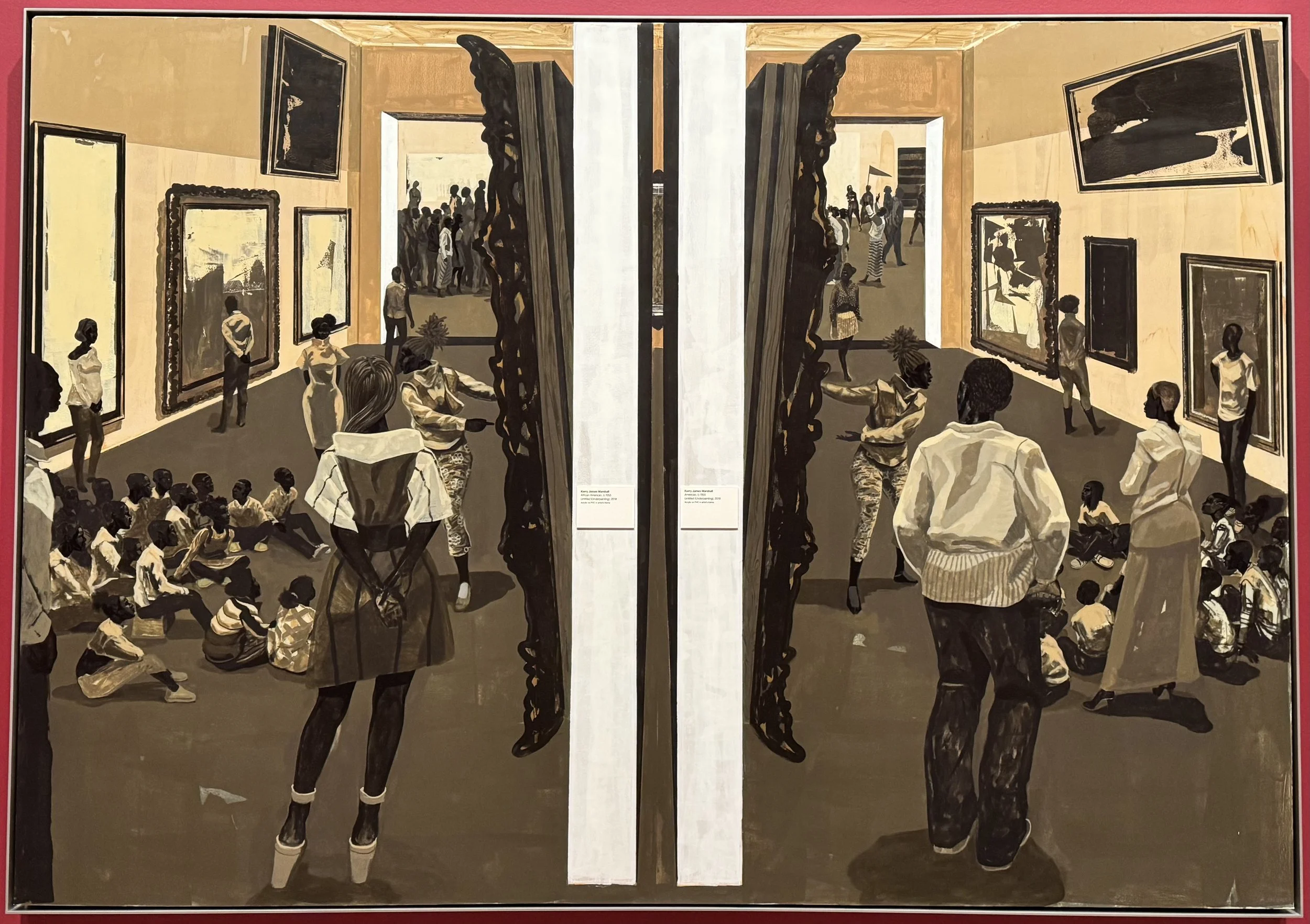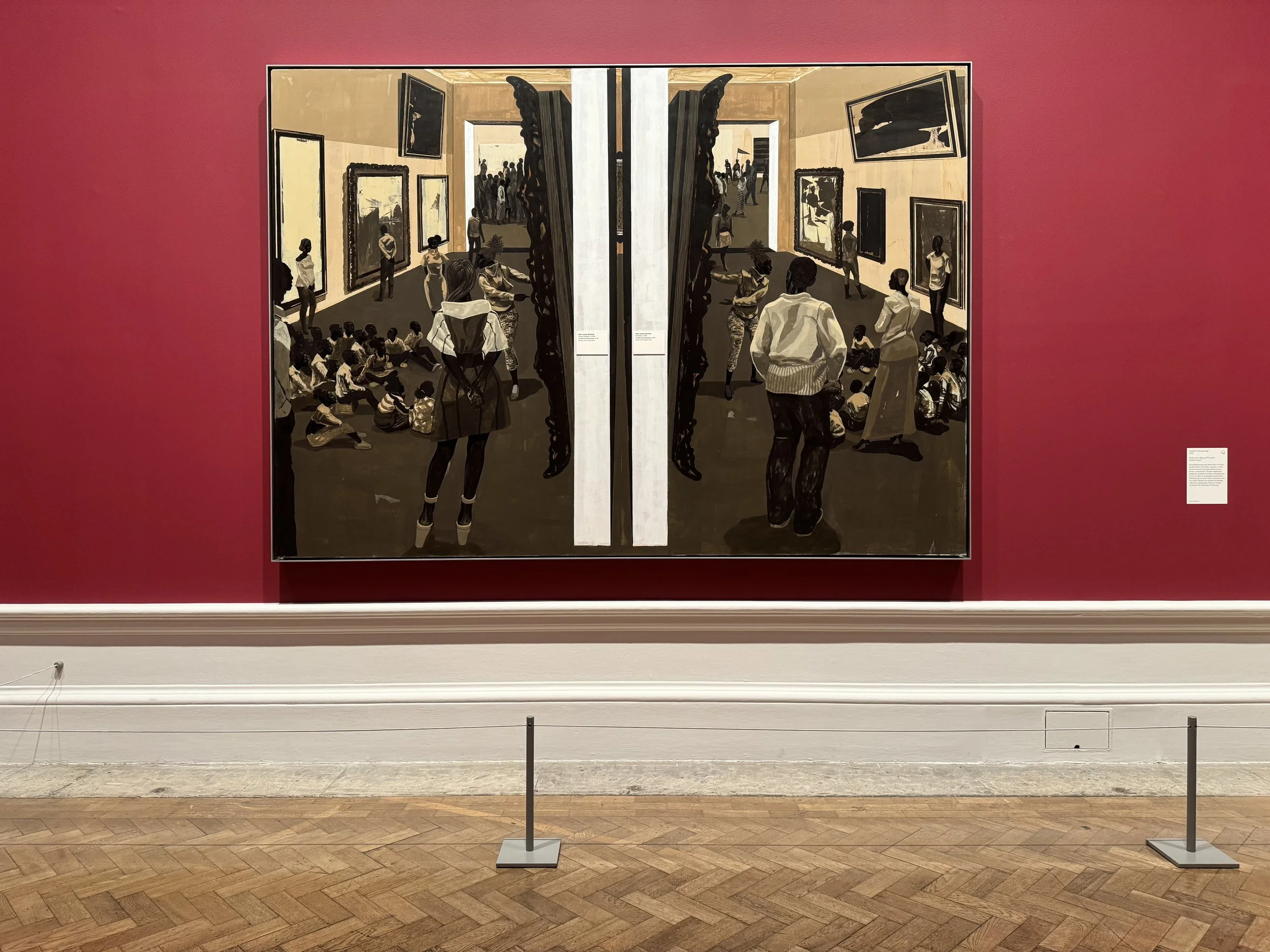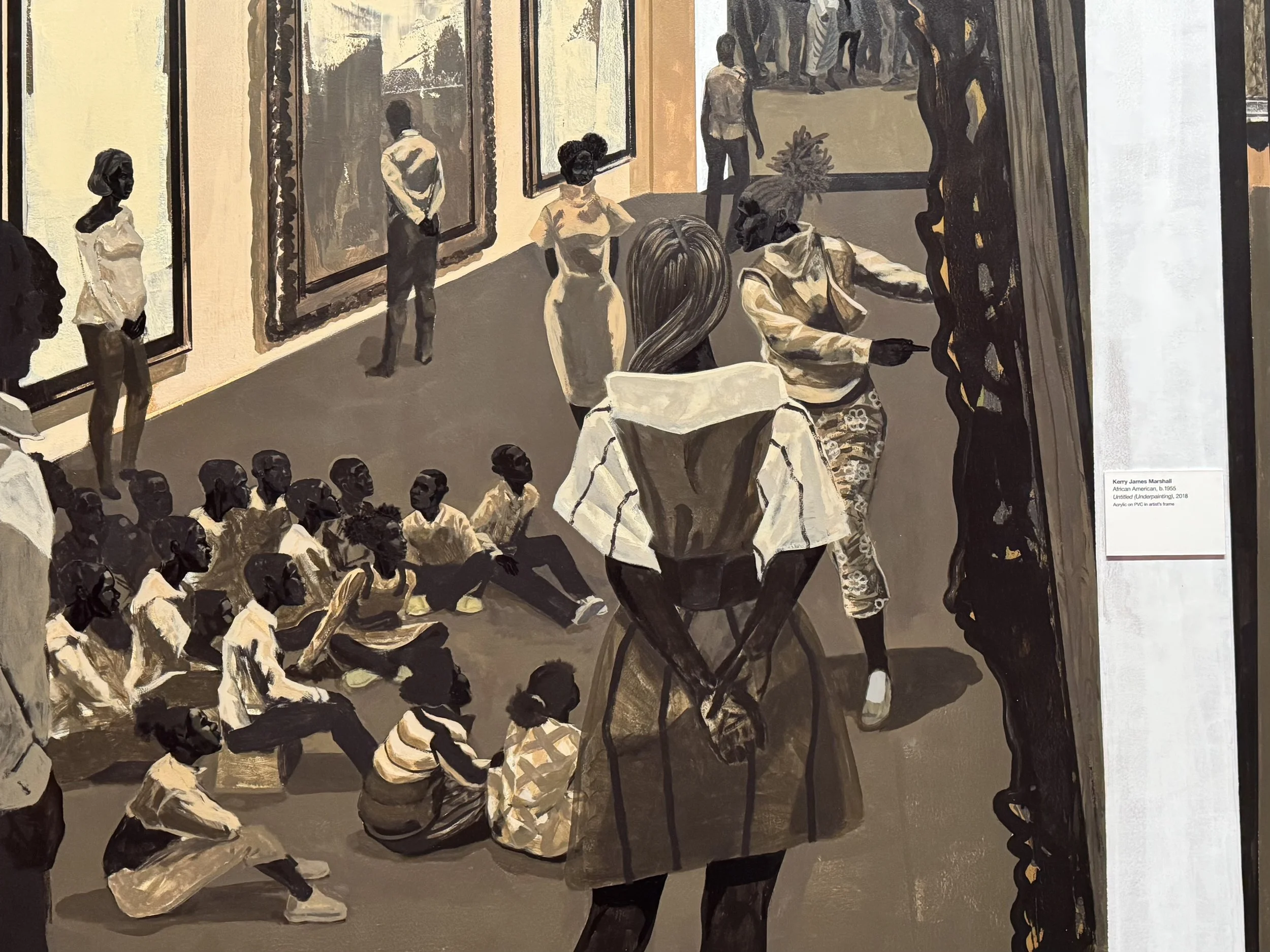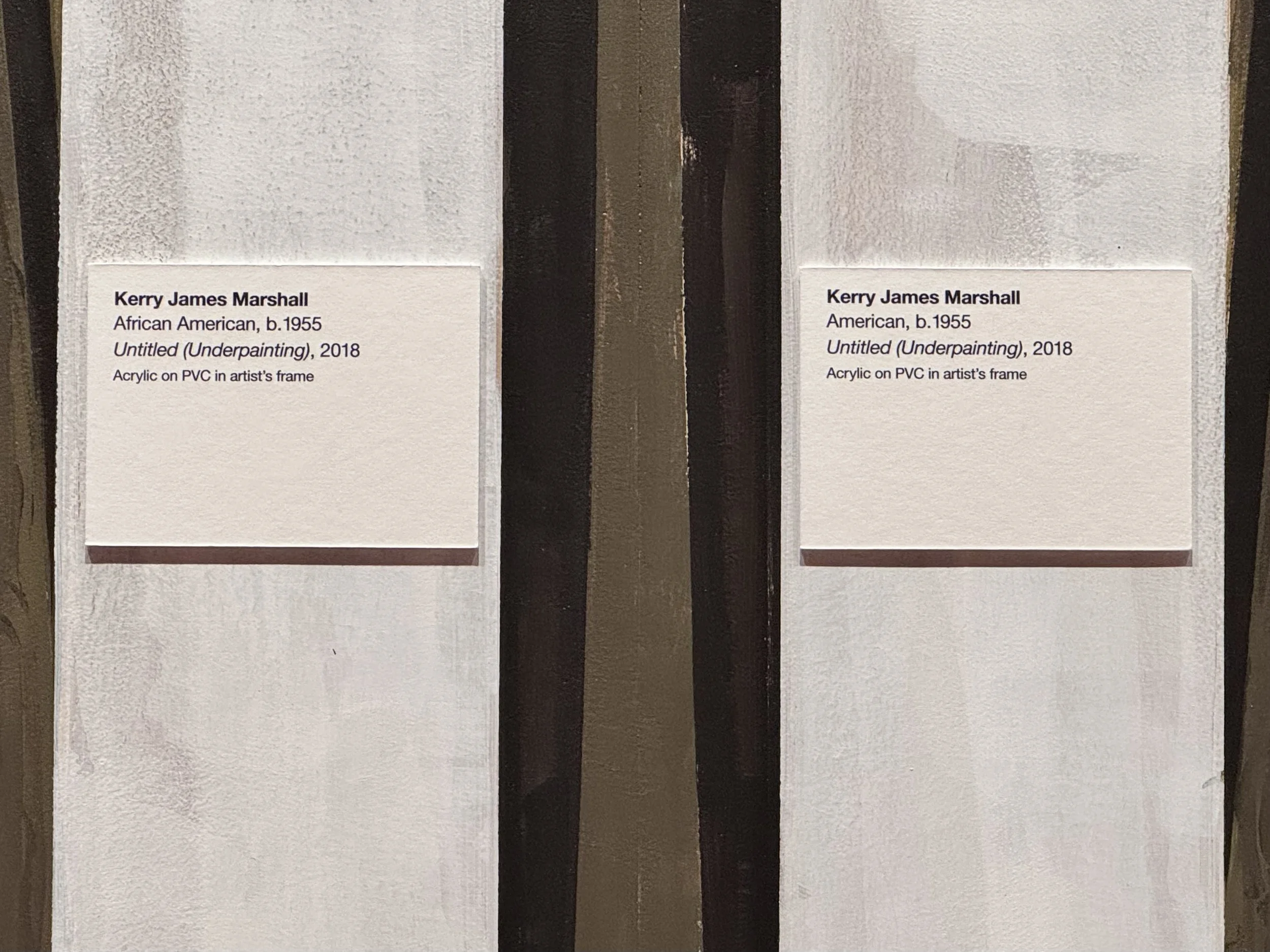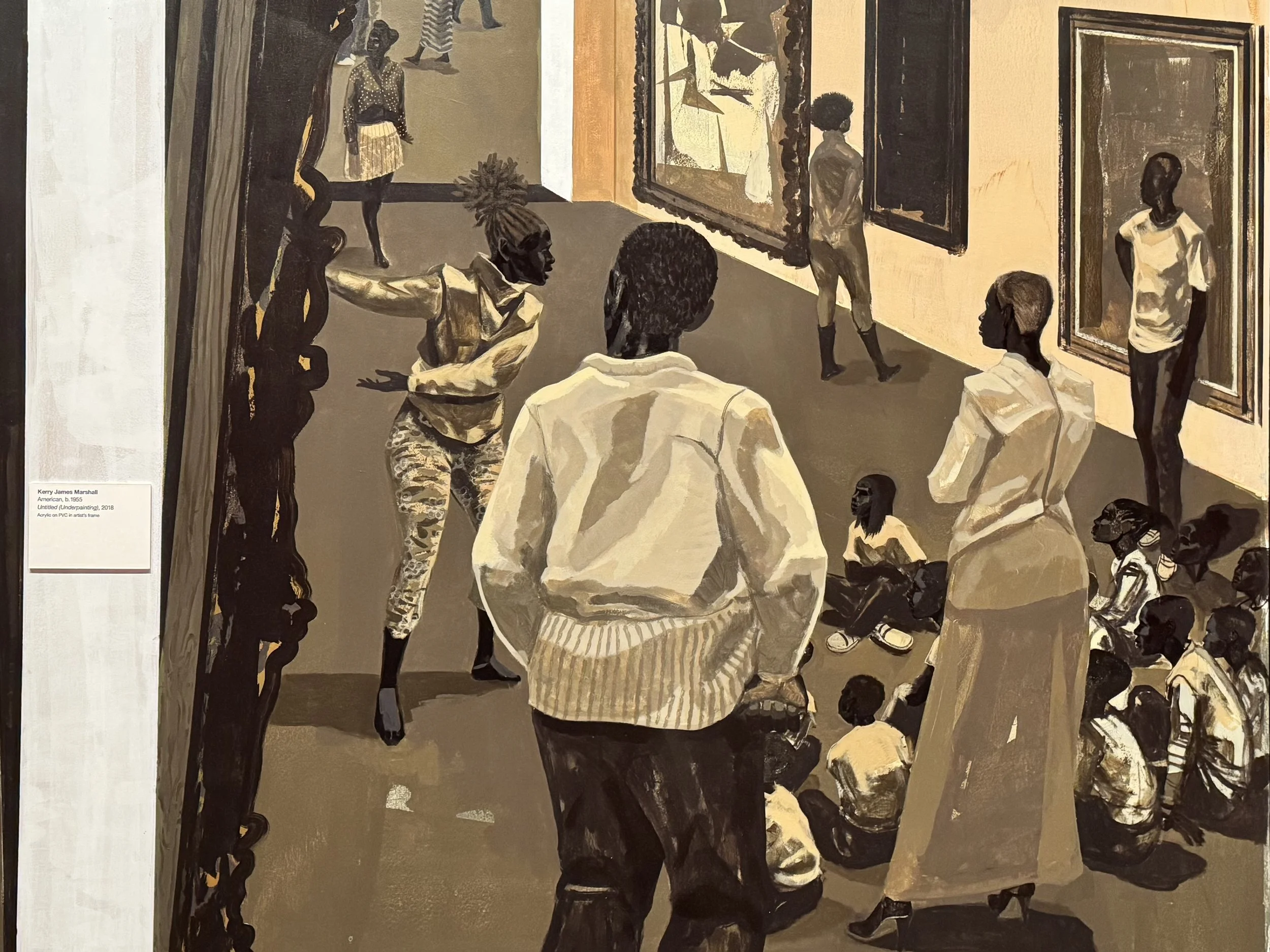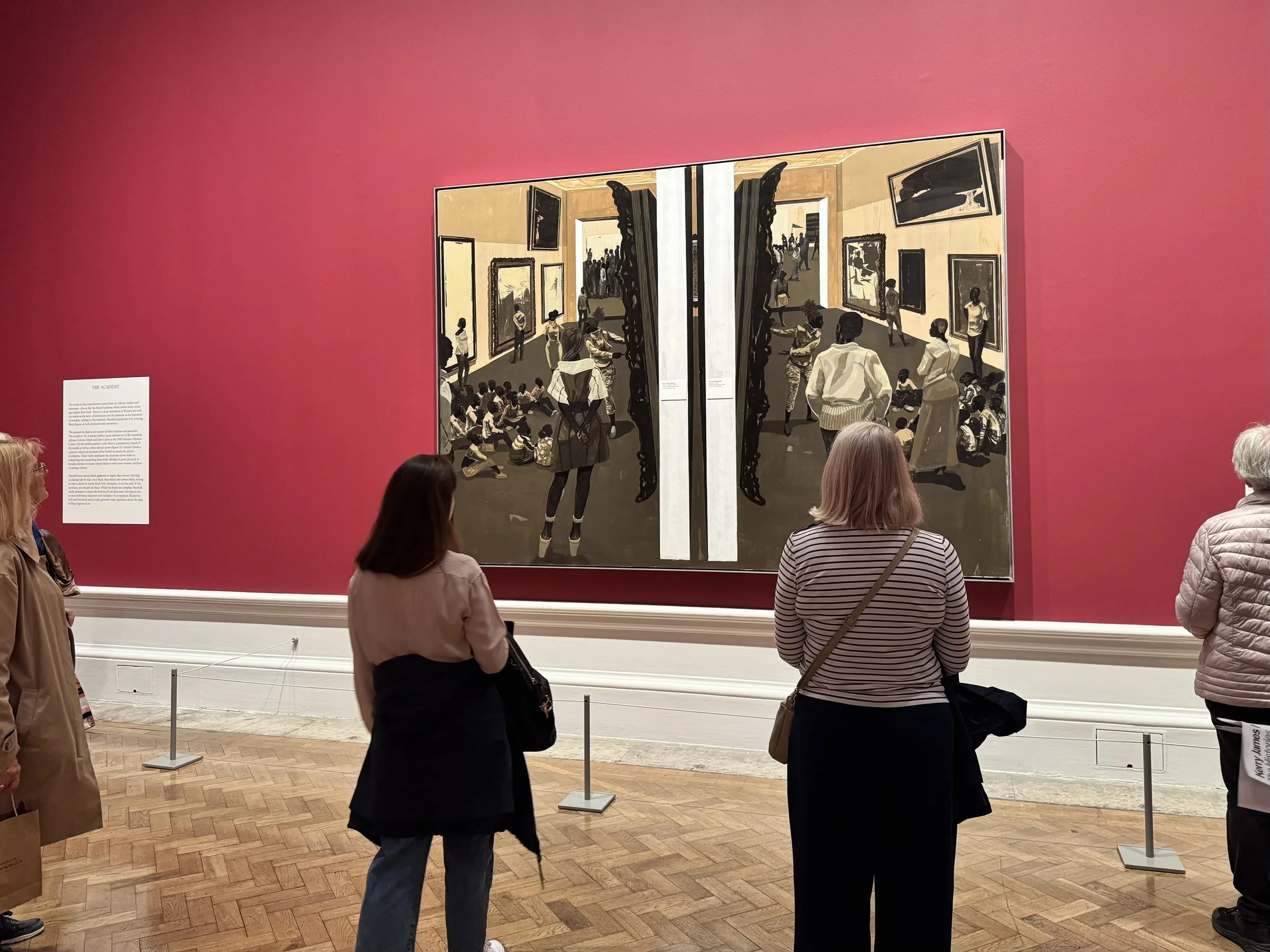Untitled (Underpainting), (2018)
Kerry James Marshall (b.1955)
Untitled (Underpainting), 2018
215.27 x 305.44 x 10.16 cm
Acrylic and collage on PVC in artist's frame
Glenstone Museum, Potomac, MD, USA
My rule of thumb for when I’m hungry on holiday is never to settle for the first option I encounter. Luckily that advice doesn’t apply to art, where the greatest rewards often come from following instinct and emotion. Which is why I allowed myself to spend so much time looking at this image in the entrance of the RA show. So much time that one of the stewards eventually tapped me on the shoulder to kindly let me know there were eight more rooms of artwork to explore.
I eventually saw them all and then promptly returned to this work because it is unlike anything else in the exhibition. It’s symmetrical. It’s rhythmic. It’s a traditional-ish composition that initially appears to present a more straightforward and simpler visual than Marshall’s more heavily layered works. But it’s not just an outlier because of the orderly configuration. Did you notice the monotone colour scheme?
That’s cleverly acknowledged by the sub-title of the work (Underpainting) which refers to a 14th century artist technique of painting an initial muted layout, in this case greyish umber, that will boost the warmth and intensity of the colours that will be applied later. Painters may notice this effect immediately. For everyone else it’s explained in the wall text. Whatever your understanding it’s hard to ignore the nostalgic effect given off by the antique photo style sepia tint.
That’s apt because a large aspect of Marshall’s practice is rooted in nostalgia. In interviews he has reflected about childhood visits to museums and being incredibly moved by seeing Old Masters paintings, but simultaneously confused and concerned that people like him were not represented in them. Untitled (Underpainting) flips Marshall’s memory by completely ignoring the artworks and focussing instead on the visitors.
Speculation has been made regarding which museum this giant 3 metres wide by 2 metres high work depicts, but Marshall has wisely anonymised all the artworks on display. Their grand size and fancy frames are all you need to see in order to understand that these are old and important works of art, the kind that leads to teachers shushing unruly kids to ensure they focus during a school outing. Two such groups of schoolchildren, and indeed every other visitor, is what will draw your attention in this artwork. You’ll notice immediately that every single person depicted is Black. But how many unique people are actually in the gallery?
On the left hand side is a very animated woman wearing camouflaged trousers. She’s attempting to direct a group of children to focus on the artworks. An almost identical mirror image appears in the right half of the canvas. The only obvious difference is that the teacher on the left has a white sock but it’s not clear if these are similarly dressed twins or two separate moments in time depicted in one scene.
Surely Marshall is too serious an artist to paint a giant Spot the Difference, but his attempts at visual trickery don’t end there. Two vertical white stripes that cut through the middle give off the impression that this might be two paintings hung closely side-by-side as a diptych. Actual physical title cards are attached to each half, cheekily listing the artwork itself. It’s an art world inside joke that visually reinforces the dual-aspect nature of the work. It’s a bit like a stage actor breaking the fourth wall and that would have been helpful during my visit because it took me quite some time to work it all out.
This kind of nuance isn’t unusual in Marshall’s art. His canvasses are often crammed full of references to art history, pop culture and the Black experience, so much so that they often fight for your attention. Some symbolism is obvious while other elements require research, and at the show I began to wonder if I was drawn to this specific work because it was one of the easier statements about racism for white people to interpret. Or do I like it because it shows hope, promise, education and inclusion? Children being taught and inspired about art, and specifically Black children being shown that they too are welcome in grand cultural institutions.
Untitled (Underpainting) was the very first work that I encountered at the RA retrospective of Kerry James Marshall. It immediately caught my attention for all of the reasons I just articulated. Knowing there were nine rooms of work to explore I assumed another would supplant it as my favourite piece in the show. Nine rooms later that was not to be the case.
That’s why I like it.
Additional reading:
This work can be seen in the Royal Academy of Arts exhibition: Kerry James Marshall: The Histories, from 20 September 2025 - 18 January 2026. (Ticketed)
Previously, on Why I Like It:
Sep — Prayer for Steven Kupfer (2024), Celia Paul
Jul — Winged Figure (1961-62), Barbara Hepworth
Jun — David (2004), Sam Taylor-Johnson
Want more? Here’s a list of the first three dozen articles in this series.

